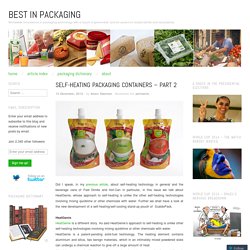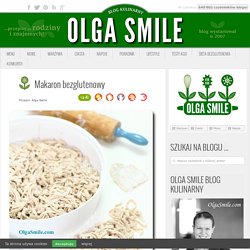

Patente US20100078010 - Insertable Thermotic Module for Self-Heating Can - Google Patentes. This application claims the benefit under 35 USC § 119(e) of U.S.

Provisional Application No. 61/119,549, filed Dec. 3, 2008. This application also is a continuation-in-part of U.S. Ser. No. 12/023,093 filed Jan. 31, 2008, which is a continuation of PCT application number US2006/29577, filed on Jul. 28, 2006, which claims priority to U.S. Provisional Application Ser. The present invention relates to self-heating (or self-cooling) cans or other containers holding beverages, food, medicine, epoxy resins and other materials that it is desired to heat (or cool) before consuming or using. Containers may have integral or separate insertable modules for warming materials in the container, such as Japanese sake, coffee, or soup. The thermic module usually has two chambers, each of which contains one of the chemical reactants, separated by a breakable barrier such as metal foil. Illustrates one embodiment of a self-heating container 1 of the present invention.
Products - Heatwave Distributors. Hot-can.com: Hot-can is a new, safe and affordable way to drink hot beverages anytime, anywhere and eco-friendly. Can I place the Hot-Can in the Microwave?

NO! The Hot-Can is aluminium and should never be placed in a microwave. The heat engine integral with the Hot-Can is designed to heat up the beverage without any external heat source. Can I pour out half of the beverage and leave half for later? The Hot-Can is not designed for pouring. Can the drink get too hot? Yes. How can I be assured that the Hot-Can is safe to use?
Customer safety is our primary concern. The Food & Drug Administration (FDA) of the USA has designated calcium oxide to be Generally Recognized as Safe (GRAS), a standard label applied to products that are not harmful. How do I dispose of the Container? The container is recyclable and should be placed in the recycling bin. How Do You Know When It Is Hot? The patented heat indicator label will clearly indicate when the correct drinking temperature has been reached, by changing from black color to GREEN color. How hot does the drink get? Self-Heating Packaging Containers – Part 2. Did I speak, in my previous article, about self-heating technology in general and the beverage cans of Fast Drinks and Hot-Can in particular, in this issue we talk about HeatGenie, whose approach to self-heating is unlike the other self-heating technologies involving mixing quicklime or other chemicals with water.

Further we shall have a look at the new development of a self-heating/self-cooling stand-up pouch of ScaldoPack. HeatGenieHeatGenie is a different story. As said HeatGenie’s approach to self-heating is unlike other self-heating technologies involving mixing quicklime or other chemicals with water. HeatGenie is a patent-pending solid-fuel technology. The heating element contains aluminium and silica, two benign materials, which in an intimately mixed powdered state can undergo a chemical reaction to give off a large amount of heat. The HeatGenie self-heating component integrates into the bottom of a metal packaging.
Mąki bezglutenowe - rodzaje i przykłady wykorzystania - Alergia pokarmowa. Eliminacja produktów zawierających gluten jest trudna.

Może się wydawać, że wystarczy zastąpić tradycyjne mąki i produkty mączne tymi bezglutenowymi. Sprawa jest dużo bardziej skomplikowana, gdyż gluten może być obecny nawet tam, gdzie się go nie spodziewamy. Kolejny problem to tzw. czystość produktów – nawet te, które w składzie nie zawierają glutenu (np. mąka kukurydziana) mogą zawierać jego śladowe ilości. Każda osoba z celiakią lub nietolerancją glutenu musi sama (najczęściej na podstawie objawów i obserwacji) poznać, czy śladowa ilość jest w jej przypadku dopuszczalna, czy też nie. Dla osób, które nie mogą przyjmować glutenu nawet w śladowych ilościach zalecane są produkty z certyfikatem – najczęściej są one oznaczone na opakowaniu znakiem przekreślonego kłosa. Jeśli nie chcemy i nie musimy korzystać tylko z produktów specjalistycznych lub gotowych wyrobów bezglutenowych (np. pieczywo) można eksperymentować z szeroką gamą mąk.
Alternatywy dla mąki glutenowej: Makaron bezglutenowy - przepis Olgi Smile. Makaron bezglutenowy Makaron bezglutenowy zaprząta mi głowę od kilku tygodni.

Staram się wymyślić przepis na makaron taki, jaki będzie smakował moim dziecku, ale równocześnie da się go przygotować w domu, pomijając wszytskie alergeny. Łatwo nie jest, brak elastyczności, szybkość wysychania, kruchość, to podstawowe problemy przy produkcji makaronu bezglutenowego i przy jego gotowaniu. Oczywiście problem ten dotyczy również różnych marek makaronów bezglutenowych, które możecie nabyć w sklepie, nie tylko domowych wyrobów. Makarony gotowe najczęściej są przygotowywane z mąki kukurydzianej i jajek. Makaron bezglutenowy Składniki potrzebne na makaron bezglutenowy: 1,5 szklanki maki z tapioki2 szklanki mąki gryczanej½ szklanki mąki ryżowej pełnoziarnistej lub białej lub gryczanej, jeśli macie alergie na ryż1 szklanka skrobi ziemniaczanej400 ml wrzącej wody1 łyżeczka solimąka ziemniaczana do przesypywania stolnicy lub rozwałkowanych w walcarce płatów ciasta.
Przygotowanie makaronu bezglutenowego: